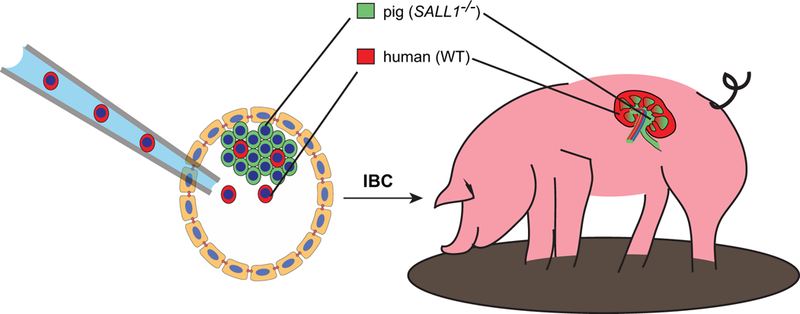Fig. 1.

Growth of human organs in pigs. A conceptual rendering is shown depicting the possible use of IBC to produce organ-specific chimeras in large domestic species. Implantation of naive hPSCs into a SALL1−/− porcine embryo (left) results in the formation of a blastocyst chimera. The ‘wild-type’ (WT) human cells establish an organogenic niche within the developing embryo, enabling it to grow a kidney. Human cells contribute negligibly to the rest of the animal. As the kidney is a complex organ, involving many different cell types, only part of the kidney is human, whereas other parts are pig and would be highly vulnerable to immune rejection in patient recipients.
